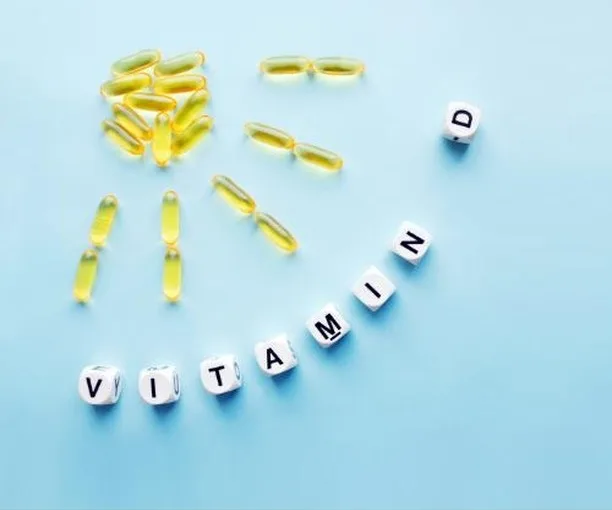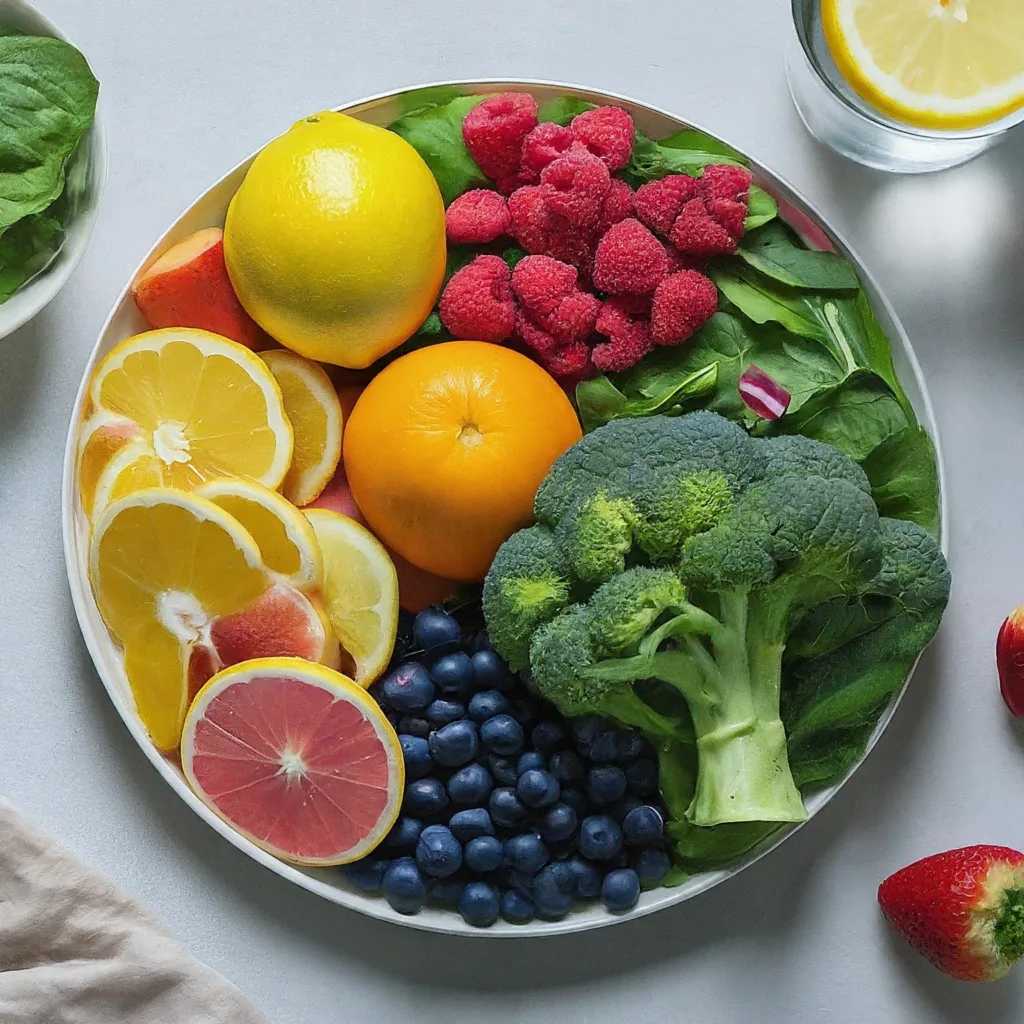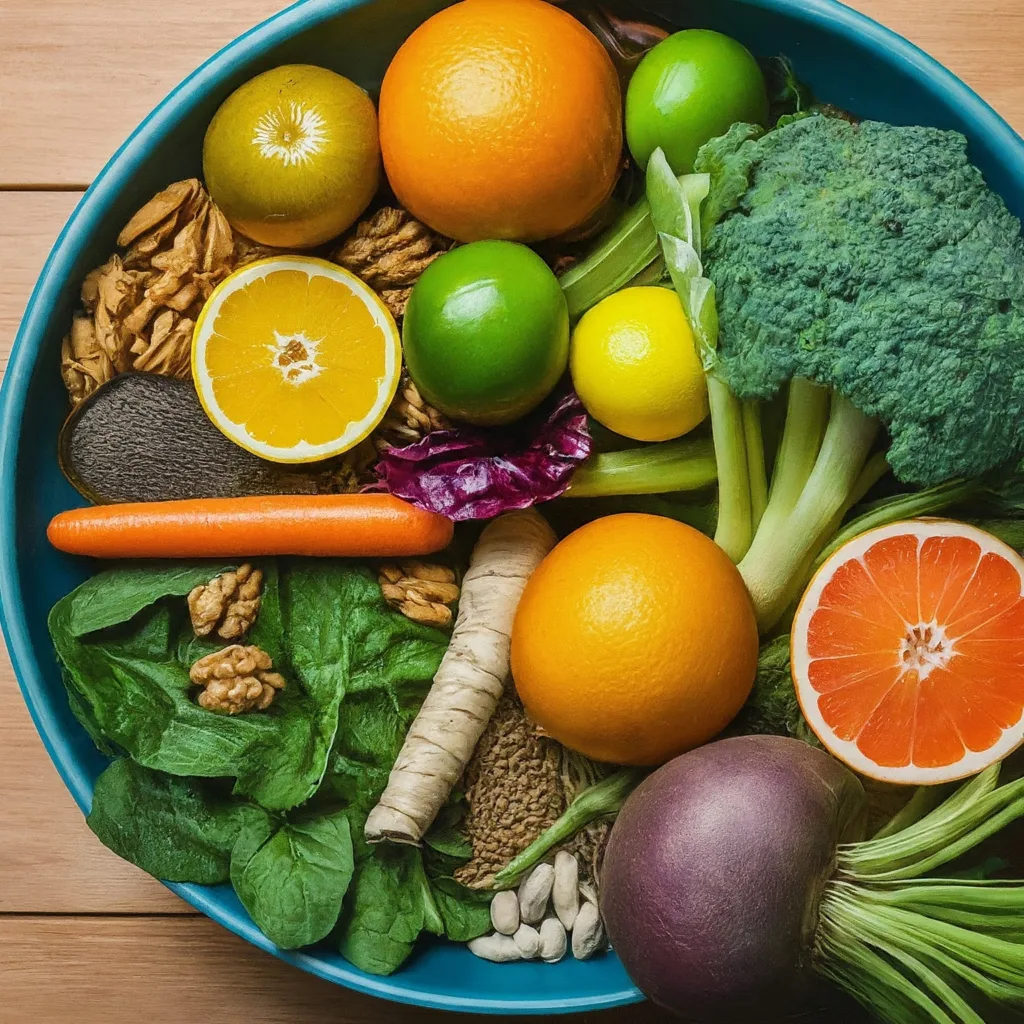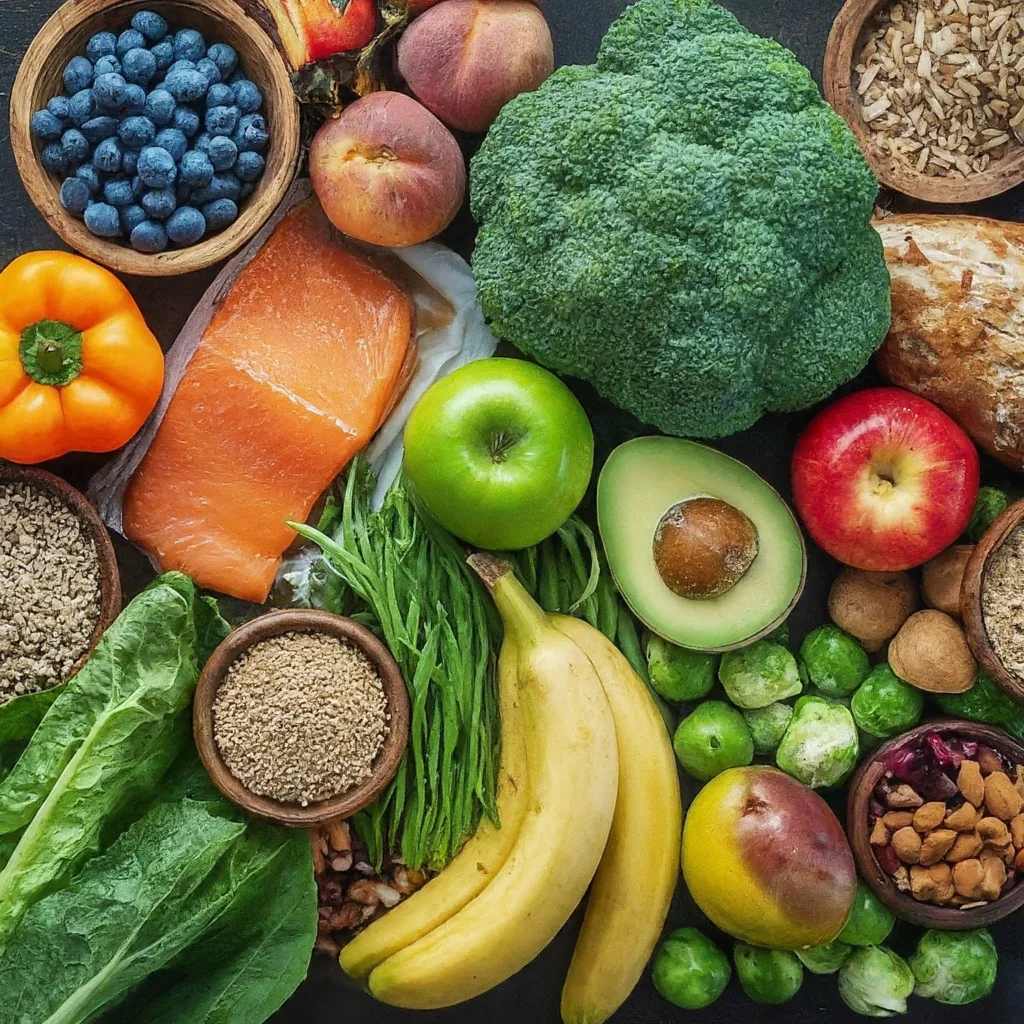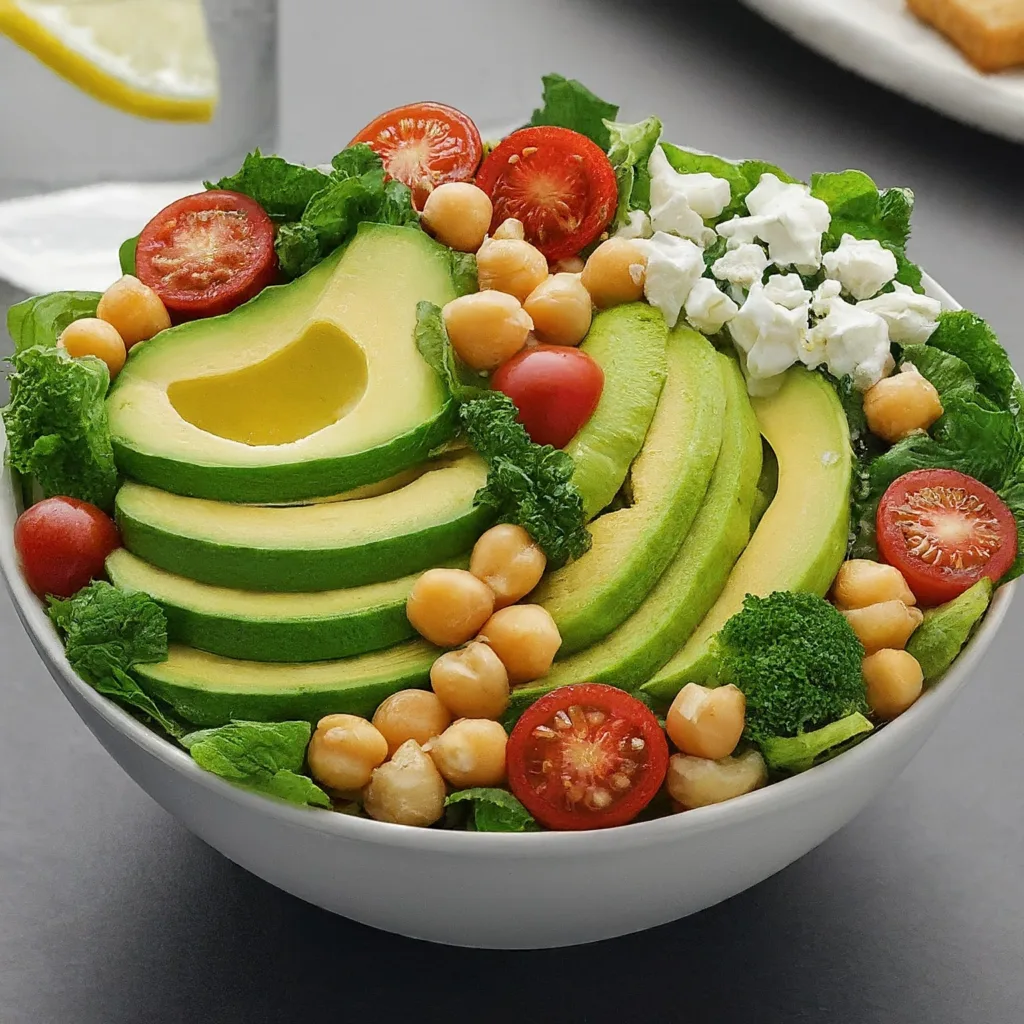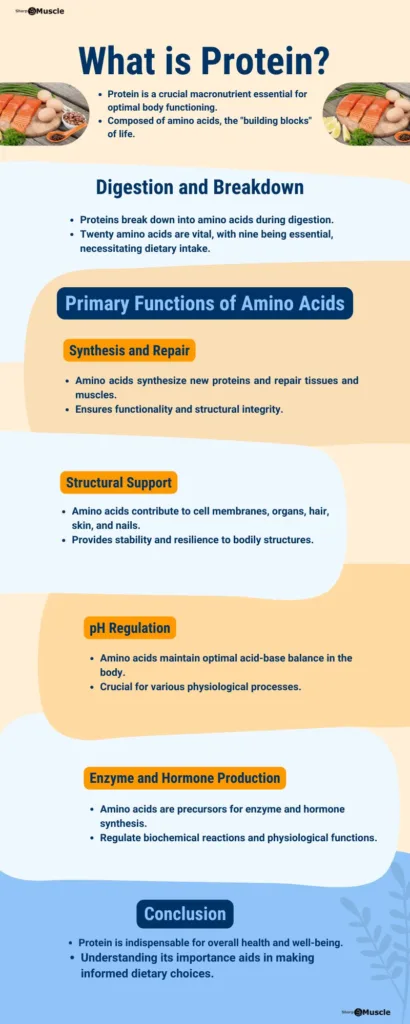Vitamin D is important for proper brain and bones development, increase vitamin D levels, so you can get out of the vitamin D-deficiency zone.
Vitamin D is important for proper brain development, and is required for many important processes, including building and maintaining strong bones. The vitamin D deficiency can be a contributing factor in causing schizophrenia, Parkinson’s disease, and depression.
Deficiencies of calcium and magnesium often occurs with vitamin D deficiency and is associated with seizures in infants and degenerative neurological disorders such as Alzheimer’s disease and Parkinson’s disease in adults.
Vitamin D, is a fat-soluble, relieves symptoms of seasonal depression; Plays an important role in slowing or preventing many types of arthritis. Reduces the chance that you will have a heart attack or stroke; Improves the release of insulin and the muscle and liver’s response to insulin, which means that normal levels of vitamin D may help prevent diabetes. Helps you develop a healthy immune system during childhood; and plays an important role in regulating cell growth and differentiation, which may prevent cancer.
By this point, you’re probably excited to increase vitamin D levels, so you can step out of the D-deficiency danger zone. All you have to do is follow the steps in the program to increase vitamin D levels, and within about sixty days you’ll be feeling better, looking younger and trimmer, and on the fast track to a lifetime of good health.
4 steps to increase vitamin D levels
Step-1: How much vitamin D do you need
Evidence indicates 30 ng/mL (75 nmol/L) as the lower limit of normal vitamin D. Even on a microscopic level, the bone mineral defects disease rickets and osteomalacia do not occur in a person with adequate vitamin D levels. 1
In a 2010 German study on the bone composition of healthy adults who died in accidents, scientists found that bone mineralization was never abnormal in individuals with vitamin D levels over 30. Vitamin D levels were below this range, however, so there was more common abnormal mineralization of bone.
People who have vitamin D levels below 30 have a dramatically increased risk of type 2 diabetes, colon cancer, cardiovascular events, and death from all causes. Also, if your vitamin D level is less than 35, the absorption of calcium in your diet is impaired.
A study from the University of Colorado published in 2011 showed that at a vitamin D level of around 40, the parathyroid gland begins to secrete more of its hormone to activate vitamin D and move calcium out of the bones. This means that when your vitamin D level is between 30 and 40, your body begins to compensate, and when your level drops below 30, it goes into full disaster mode.
To ward off health problems, keep your vitamin D level over 30 and ideally between 40 and 60. This is in line with studies of life keepers and farmers in equatorial regions who spend most of their day in the sun. It is better to overshoot with a level slightly higher than the risk of serious health consequences.
Step-2: Sun and supplements to increase vitamin D levels
This step is the most important, fill your vitamin D with sun and supplements.
Here is the way:
- Maximize Your Safe Sun Exposure
- Use sunscreen only after it is rich in vitamin D
- Take vitamin D (you can find out the appropriate dosage after reading your risk score and/or your blood level data)
- Stay away from too much vitamin A when you’re supplementing with vitamin D
Using sunlight to increase vitamin D levels
One way to increase vitamin D levels is to increase your sun exposure, but this requires regular exposure to a UV index of 3 or higher. Most people need a vitamin D supplement to get the job done. To estimate the amount of sun you need to make enough vitamin D, follow these instructions from the Sun Exposure Times Table.
- To estimate the amount of sun you need to get enough vitamin D, use the UV calculator for this. Enter your zip code and skin type, and you can calculate the number of minutes of sun exposure you need depending on where you live.
- See the table below to find your UVI (UV Index) on the top row.
- Follow it below and according to your skin type (see definitions at the bottom of the table).
- The number of minutes of exposure without sunscreen at least three times a week as shown in the table gives you enough vitamin D production to maintain normal blood levels. This is based on 50 to 75 percent skin exposure (shorts and T-shirts or swimsuits).
Note: Australia has a national program that provides real-time UVI values.
Sun Exposure Times Table: Times required to make vitamin D
| Skin types | UVI 0-2 | UVI 3-5 | UVI 6-7 | UVI 8-10 | UVI 11+ |
|---|---|---|---|---|---|
| Skin type-1 | No vitamin D | 10-15 | 5-10 | 2-8 | 1-5 |
| Skin type-2 | No vitamin D | 15-20 | 10-15 | 5-10 | 2-8 |
| Skin type-3 | No vitamin D | 20-30 | 15-20 | 10-15 | 5-10 |
| Skin type-4 | No vitamin D | 30-40 | 20-30 | 15-20 | 10-15 |
| Skin type-5 | No vitamin D | 40-60 | 30-40 | 20-30 | 15-20 |
Note: If you are 50 years of age or older, double the exposure time. One tanning bed is roughly equivalent to UVI 7-8.
Skin types
- Skin type-1: Always burn, never tan
- Skin type-2: Burn easily, rarely tan
- Skin type-3: Occasionally burn, slowly tan
- Skin type-4: Rarely burn, rapidly tan
- Skin type-5–6: Never burn, always dark
You should consider applying SPF (Sun Protection Factor) 15 sunscreen or covering up after you’ve been exposed for the time given in the table. Although your body destroys vitamin D slowly, if your cold (UV index below 3) is three months or longer, taking vitamin D supplements is good, at least during the winter.
You can never make too much vitamin D from sun exposure because excess vitamin D is automatically inactivated in your skin with further sun exposure. So, an individual with a normal vitamin D level of 50 who spends a day on a boat with friends will not overdose on vitamin D. Most of the vitamin D made on the boat will be inactivated by constant sun exposure. The UVB (type B ultraviolet) facilitation of vitamin D production is a self-regulating process.
Recent research suggests that people who frequent tanning salons have normal vitamin D levels, typically over 45. This would mean that if you frequent a tanning salon, or you tan in your own tanning bed, you probably won’t need vitamin D supplementation.
Vitamin D is fat-soluble, the older you are, the more D you need. When it comes to vitamin D supplementation, one size doesn’t fit all.
Here is how you should supplement vitamin D if you don’t want to bother measuring the vitamin D levels. Simply find out your risk profile score and use that number to arrive at the correct dosage. Remember, too, that this may overestimate or underestimate the actual needs.
Risk score and daily dose of vitamin D
| Risk score | Daily dose of vitamin D |
|---|---|
| 0 to 2 | Sun only (get blood level is measured); no supplement |
| 3 to 5 | 20 IU/lb. body weight |
| >5 | 25 IU/lb. body weight |
Based on data from the Centers for Disease Control and Prevention (CDC), the average level of vitamin D is 15 to 35. 2 3
30 is the minimum normal vitamin D level for good health. Toxicity – almost impossible to reach by chance, a level higher than 250 would be required. In fact, if you have a vitamin D level of 60, you can still sunbathe or tan in a tanning bed and not experience toxicity. Similarly, if your level was 60, and you took in 20 IU per pound, you would not be toxic. Your vitamin D level will probably reach 90, but unless you were taking excessive amounts of calcium, this would not result in toxicity. Also, it’s important to remember that if you’re tanning, you probably won’t need supplements.
Similarly, if you were a shut-in who never saw daylight and your vitamin D level was 5, you could take 25 IU per pound and your vitamin D level would rise to 40. So even if you’re not measuring your blood levels, you can assume that doses of 20 to 25 IU per pound (or 40 to 60 IU per kilogram) per day produce vitamin D levels in the normal range, depending on your risk score. Will do
On the other hand, if you choose to measure your vitamin D level through tests, you will be able to adjust your vitamin D levels by a specific amount (in units of vitamin D per pound as a weight-based dosage). For example, if your vitamin D level is 15 at the end of winter (March), and you want to take 35 more points to reach 50, you may need to increase vitamin D levels by about 35 points. 26 units per pound should be taken.
So for the 170 pounds weigh need 5,780 units of vitamin D a day. Round off your amount to 6,000 IU a day, and then check your vitamin D level every 3 months. Remember, you can get extra D from a daily vitamin or mineral supplement, and you need to include it in your calculated daily dose.
Calculating dose of vitamin D from blood levels
| Desired change in blood levels | |
|---|---|
| 5 ng/mL | 12 nmol/L |
| 10 ng/mL | 25 nmol/L |
| 15 ng/mL | 37 nmol/L |
| 20 ng/mL | 50 nmol/L |
| 25 ng/mL | 62 nmol/L |
| 30 ng/mL | 75 nmol/L |
| 35 ng/mL | 87 nmol/L |
| 40 ng/mL | 100 nmol/L |
| 45 ng/mL | 112 nmol/L |
| 50 ng/mL | 125 nmol/L |
| 55 ng/mL | 137 nmol/L |
| 60 ng/mL | 150 nmol/L |
| 65 ng/mL | 162 nmol/L |
| Amount of vitamin D3 to take | |
|---|---|
| 4 IU/lb | 9 IU/kg |
| 8 IU/lb | 17 IU/kg |
| 11 IU/lb | 24 IU/kg |
| 15 IU/lb | 34 IU/kg |
| 19 IU/lb | 42 IU/kg |
| 23 IU/lb | 51 IU/kg |
| 26 IU/lb | 60 IU/kg |
| 30 IU/lb | 67 IU/kg |
| 34 IU/lb | 76 IU/kg |
| 38 IU/lb | 84 IU/kg |
| 41 IU/lb | 93 IU/kg |
| 45 IU/lb | 101 IU/kg |
| 49 IU/lb | 109 IU/kg |
There are two forms of vitamin D:
- Vitamin D2 (Drisdol or Ergocalciferol, the prescription form of D2)
- Vitamin D3
D2 comes from plants. Mammals make D3 from cholesterol with the help of UVB radiation and heat.
In about 7 days, a human’s dose of vitamin D2 is half-metabolized; Complete elimination takes 2 weeks. A single dose of vitamin D3 is halved in about 7 weeks. The peak blood level of vitamin D2 is 30 percent lower than D3 after the same dose. You should take vitamin D2 supplement at least twice a week and preferably daily to accommodate for rapid elimination and lower levels. In general, weekly or monthly doses of 50,000 IU D2 will not substantially increase vitamin D levels or the effects of vitamin D. A recent review on the effects of vitamin D on bone confirms the inefficiency of vitamin D2 as it is commonly prescribed.
The vitamin D3 replacement at a given dose will reach steady state in 10 weeks. The long half-life of vitamin D3 allows missed doses without a significant drop in blood levels. Makeup dosing and weekly or monthly dosing are acceptable and still maintain a stable blood level.
You can take vitamin D3 once a week or only on certain days, as long as the weekly total is based on your needs. For example, if you need 3,000 IU a day, you can take 21,000 IU once a week or 4,000 IU 5 days a week for a total of 20,000 IU. A difference of 1,000 IU for the week is negligible. For any extended period, you should not need more than 40 units per pound or 85 units per kilogram. Even if you are living in a submarine, this dose raises your blood level by 50 points.
Do not take excessive amounts of vitamin A
When you’re shopping for vitamin D, avoid vitamin D supplement that contain vitamin A. If you take vitamin D supplement that contain vitamin A, be careful because you can easily overdose on vitamin A when you’re trying to increase vitamin D levels. What’s worse, too much vitamin A can negate the benefits of vitamin D.
Combination vitamin D and vitamin A products are derived from fish liver oil (usually codliver oil), and the typical ratio is 10:1, meaning 10 times more vitamin A than vitamin D. The new RDI/DRI for vitamin A is 3,000 IU for men, 2,310 IU for women, and about half for children. So you get a toxic amount of about 9,000 to 10,000 IU per day in adults and 3,000 IU per day in children. Betacarotene is a better, safer form of vitamin A.4
You can recognize acute vitamin A intoxication by the symptoms listed below:
- Vomit
- Headache
- Dizziness
- Nausea
- Blurred vision
- Rashes
- Lack of understanding
Also note that chronic vitamin A toxicity can cause birth defects, liver abnormalities, osteoporosis and central nervous system disorders, so this is not a vitamin you can take lightly.
Step-3: Increase vitamin D levels diet plan
This step is an important part of increase vitamin D levels; The critical moment when you calculate your acid overdose and rebalance your diet. You begin to figure out what is causing your acid overdose. You identify your dietary weaknesses. Then you eliminate salt, cheese, pasta, cereals and bread.
Check the amount of produce and lean protein you eat per day. Focus on consuming at least half a gram of protein per pound of lean body weight in a day. As a basic rule, eat three times as much lean protein.
What you eat?
| Food categories | Foods |
|---|---|
| Cereal: | All cereals made from grains — Oats, wheat, rice, quinoa, barley |
| Pasta: | All pasta matters, regardless of composition — Whole grains, seminole wheat, flax, rice noodles, egg noodles, and Spinach |
| Bread: | Whole wheat, oats, multigrain |
| Beans: | Legumes Family — Kidney beans, soybeans, lima beans, peas, navy beans, garbanzo beans, chili beans, peanuts |
| Fish & Meat: | Fish — salmon, halibut, mackerel, canned tuna, canned sardines, herring; Meat — beef, poultry, pork, organ meat, game meat |
| Dairy products & cheese: | Cow milk, donkey milk, human milk 5, hard and soft cheeses |
| Nuts: | Brazil nuts, walnuts, macadamia nuts, almonds, pecans, pistachios, cashews |
| Vegetables: | All kinds of fresh or frozen vegetables — Broccoli, kale, cabbage, bok choy, mustard greens, spinach, potatoes, collard greens, artichokes, asparagus, mushrooms of all kinds (sun-dried are rich in vitamin D), peppers (green, red, orange, yellow), seaweed (kelp), carrots, onions, tomatoes, mustard greens, swiss chard, parsley |
| Fruits: | All kinds of whole fruits and 100% fruit juices |
2 weeks increase vitamin D levels meal plan
Week-1: Increase vitamin D meal plan
Breakfast
| Ingredients | Quantities |
|---|---|
| Avocado Scramble Wrap: Eggs Canola oil Avocado (diced) Tomato (diced) Lemon juice Steamed whole leafy greens (kale, mustard, swiss chard) Alfalfa, broccoli, or onion (sprouts) | 3 1 tbsp ½ 1 medium ½ – – |
| Orange | 1 whole |
| Tea | 1 cup |
How to Make: Increase Vitamin D Levels Avocado Scramble Wrap
- In a small pan, whisk 3 eggs in a small amount of canola oil.
- Remove the pan from the heat. Gently stir in avocado, tomato and lemon juice.
- Dredge the egg in a whole leaf of leafy green of your choice and top with sprouts.
Lunch
| Ingredients | Quantities |
|---|---|
| Turkey | 125 g |
| Mixed greens salad: Radish Green peppers Celery | 1 cup |
| Sunflower seeds | 1 cup |
| Balsamic vinegar | ½ tbsp |
| extra-virgin olive oil | 1 tbsp |
Snack
| Ingredients | Quantities |
|---|---|
| Apple | 1 large |
Dinner
| Ingredients | Quantities |
|---|---|
| Everyday Chimichurri: | |
| Parsley | ½ cup |
| Basil leaves | ½ cup |
| Packed herb (thyme, rosemary, dill, cilantro) | 3 tbsp |
| Garlic (minced) | 1 tbsp |
| Lemon juice | 1 tbsp |
| Ground black pepper | ¼ tsp |
| Canola oil or extra-virgin olive oil | 2 tbsp |
How to Make: Increase Vitamin D Levels Everyday Chimichurri
- Combine all ingredients except oil in a food processor and process until everything is finely ground.
- While the machine is running, add oil until it is well mixed.
Week-2: Increase vitamin D meal plan
Breakfast
| Ingredients | Quantities |
|---|---|
| Chicken breast | 120 g |
| Celery chopped | 1 rip |
| Apple chopped | 1 whole |
| Raisins | 15 |
| Walnuts | 1 handful |
| Lemon juice | ½ |
| Extra-virgin olive oil | 1 tbsp |
| Seasonal frui | 1 |
| Cup of coffee with ground cinnamon | 1 cup |
Lunch
| Ingredients | Quantities |
|---|---|
| Balsamic Marinated Skirt Steak with Grilled Fennel: (4 servings) | |
| Skirt steak | 150 g |
| Balsamic vinegar | ¼ cup |
| Fennel bulbs, stalks and bottom of bulb removed | 2 |
| Olive oil | 2 tbsp |
| Pepper ground | – |
| Lemon juice | ½ |
How to Make: Increase Vitamin D Levels Balsamic Marinated Skirt Steak with Grilled Fennel
- Add skirt steak with balsamic vinegar and a cup of chimichurri. Leave it on for at least 30 minutes or overnight.
- Cut the fennel bulbs in half lengthwise and then into 4 to 6 more wedges, trying to keep all the layers on the bottom intact, so they are as manageable as possible on the grill.
- Brush wedges with olive oil and season with freshly ground black pepper.
- Preheat grill over medium-high heat.
- Remove steak from marinade, allow excess to drip off, and pat steak dry by patting lightly. Place it on the grill, turning it once, until it reaches desired doneness (about 6 to 8 minutes total for medium-rare, for ½-inch-thick steaks). Remove it from the grill and when the fennel is grilled, make a tent of aluminum oil on top.
- Put the fennel wedges on the grill. Grill them for about 10 minutes, turning them once with tongs, until they have grill marks and are tender. Combine lemon juice and remaining 2 tbsp chimichurri and pour it over grilled fennel.
- Serve fennel wedges with steak.
Snack
| Ingredients | Quantities |
|---|---|
| Kiw | 1 |
| Pistachios | 1 small handful |
Dinner
| Ingredients | Quantities |
|---|---|
| Grilled chicken Spinach salad with tomato, and cucumber | 120 g – |
| Gazpacho with Avocado: (4 servings) | |
| Cucumber | ½ |
| Bell pepper | ½ |
| Tomatoes chopped | 2½ cups |
| Red onion chopped | ¼ cup |
| Tomato juice | 1 cup |
| Red wine vinegar | 1 tbsp |
| Olive oil | 2 tsp |
| Pepper ground | ¼ tsp |
| Avocado | 1 whole |
| Fresh-brewed iced tea | 1 glass |
How to Make: Increase Vitamin D Levels Gazpacho with Avocado
- In a food processor, combine cucumber, pepper, tomato and red onion; Pulse until they are puréed.
- Add the next 4 ingredients (through the ground black pepper) and pulse a few more times to mix everything together.
- Remove the mixture from the food processor and mix in the cubed avocado.
- Take out the gazpacho in a bowl and garnish with cucumber on top.
Dessert
| Ingredients | Quantities |
|---|---|
| Fruit and Nut Bar: (12 bars) | |
| Cranberry, apple, or orange | ¼ cup |
| Dates | 5 |
| Almonds | 1 cup |
| Dried fruit (mix raisins, cherries, prunes, apricots) | ¾ cup |
| Walnuts or pumpkin seeds | ¼ cup |
| Sunflower seeds | ¼ cup |
How to Make: Increase Vitamin D Levels Fruit and Nut Bar
- Preheat oven to 300° Fahrenheit and line a baking sheet with parchment paper.
- Pour the juice over the dates and let them soak for at least 5 minutes, mashing them lightly with a fork.
- Put almonds and dried fruits in a food processor. Pulse the mixture a few times to cut it roughly. Next, add the soaked dates and pat till the mixture starts sticking together.
- Add the last 2 ingredients and a few more times just to incorporate.
- Using your wet hands, scoop the mixture onto a clean work surface and flatten the mixture into a square sheet about -inch thick (don’t worry too much about how they look because they will taste the same). Cut the sheet into 12 bars.
- Arrange bars on a prepared baking sheet and bake for 10 minutes.
- Flip over and continue baking for another 8 to 10 minutes, or until nuts are toasted and dry. Remove the bars from the oven and let them cool and store the bars in an airtight container.
Step-4: Supplementation plan to increase vitamin D levels
This step refers to your complete supplement to increase vitamin D levels. Establishing it is a big step towards greater health, but it doesn’t have to be complicated.
Here is a tentative supplement:
- Multivitamin and mineral supplement (as needed based on increase vitamin D levels diet)
- vitamin d supplement
- magnesium supplement
- Concentrated Omega-3 Fatty Acid Supplement
Do not forget that when you are bursting these pills, you must also eat good food, otherwise the picture will be incomplete.
Daily Recommended Intake to Increase Vitamin D Levels
| Nutrients | 2010 DRI/RDA | Increase Vitamin D |
|---|---|---|
| Vitamin A | 3000 IU | 2000 IU retinol or 7200 IU betacarotene |
| Vitamin B3 | 11–12 mg | 20 mg |
| Vitamin B6 | 1.3–1.4 mg | 2 mg |
| Folate (B9) | 400 mcg | 400 mcg |
| Vitamin B12 | 2.4 mcg | 3 mcg (age > 50, 10–30% malabsorb) |
| Vitamin C | 75-90 mg | 120 mg |
| Vitamin D | 600 IU | 20–25 IU/lb ABW (actual body weight) |
| Vitamin E | 22 IU | 40 IU (do not exceed 200 IU/d) |
| Vitamin K | 120 mcg | 120 mcg |
| Magnesium | 320–420 mg | 2.5 mg/lb IBW (ideal body weight) |
| Calcium | 1000–1200 mg | 0–600 mg |
| Omega-3 | 2 servings fish/wk | 15–20 mg/lb IBW combined EPA + DHA |
You can refer to the table for supplementary recommendations. The middle column lists the current DRI recommendations. On the right are the recommendations, based on analysis and interpretation of today’s best nutrition studies, and it’s an experience with patients improving their health through Increase Vitamin D Levels.
You can find a multivitamin that contains the right amounts of many nutrients, but a daily vitamin may not contain enough vitamin D, magnesium and omega-3 fatty acids. So to get the proper amount of these, you need to take additional supplements.
Use caution when taking supplements designed to target specific diseases or systems. These supplements may overlap with each other and your multivitamin/mineral, thus providing excessive and possibly unsafe amounts of specific nutrients. Minerals are not easily eliminated and can accumulate in tissues, especially bone, causing toxicity. To avoid over-supplementation, create a chart that shows what is in each supplement and how much and how often you take it.6
- Best Pract Res Clin Endocrinol Metab. 2011 Aug;25(4):681-91. DOI: 10.1016/j.beem.2011.06.009. Why the minimum desirable serum 25-hydroxyvitamin D level should be 75 nmol/L (30 ng/ml)[↩]
- vitamin D Fact Sheet for Consumers: https://ods.od.nih.gov/factsheets/VitaminD-Consumer/[↩]
- vitamin D Fact Sheet for Health Professionals: https://ods.od.nih.gov/factsheets/VitaminD-HealthProfessional/[↩]
- https://www.inspire.com/groups/national-osteoporosis-foundation/discussion/vit-d-test-results-at-103-ng-l-after-three-months/[↩]
- Cyrus Cooper, Kassim Javaid, Sarah Westlake, Nicholas Harvey, Elaine Dennison; Developmental Origins of Osteoporotic Fracture: the Role of Maternal Vitamin D Insufficiency. The Journal of Nutrition, Volume 135, Issue 11, November 2005, Pages 2728S–2734S, https://doi-org.eres.qnl.qa/10.1093/jn/135.11.2728S[↩]
- May 1, 2012, James Dowd (Author), Diane Stafford (Author). The Vitamin D Cure, Revised Hardcover.[↩]


